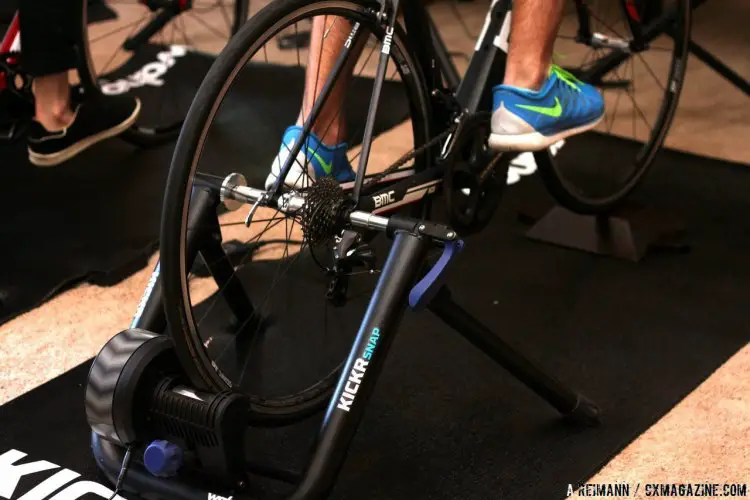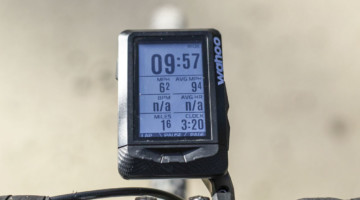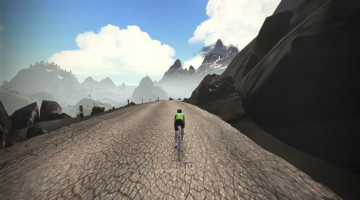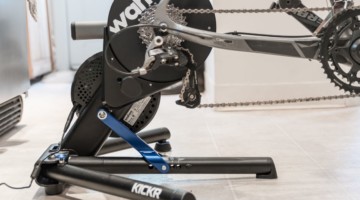Wahoo Fitness is an Atlanta-based company that has focused on training systems and sensors for cyclists, and was one of the earliest adopters of pairing cycling training data to a smart phone through Bluetooth. When we last reviewed Wahoo Fitness products, we were analyzing its RFLKT hybrid bike computer that can pair to a smartphone ad transmit the data to a rider’s favorite storage destinations without requiring to drain the battery during the ride.
While Wahoo Fitness has already been manufacturing trainers that connect directly to a smartphone with its KICKR as well as applications that provide virtual competition to keep the motivation strong. As Press Camp 2015, however, the company came out with one of its lightest, most affordable systems yet with the KICKR SNAP.
Just like the company’s original KICKR, the SNAP is able to connect to both Smart Phones and devices through both ANT+ and Bluetooth transmissions. Also like the original, the resistance of the trainer is electromagnetic, which allows users to adjust intensity through their Smart Phone, computer, or a platform like Zwift or TrainerRoad, which can create pre-planned intensities as well as virtual courses.
At Press Camp, the folks at Wahoo Fitness set me up on both their traditional KICKR and their SNAP to try out on both a virtual course and a manual adjuster. While it is easy to get caught up in the virtual world of cycling with climbs and descents, I found the manual adjuster to impress me more simply because I knew how quick the electromagnetic resistance adjusted itself. Typically the wait time can be five seconds or more, which can be a seeming eternity if the resistance is set high enough. With the KICKR and SNAP, the change is near immediate.
The biggest difference between the original KICKR and the SNAP is the interface with the bike. While the original model requires the rider to undo their rear wheel and mount their dropouts on the system, the KICKR SNAP is a wheel-on design, which allows a full 24” to 29” wheeled bike to mount to the trainer.
Besides the quickness of the changing resistance, the second biggest surprise is the sheer inertia of the flywheel built into system. Granted, the flywheel is slightly heavy, but the rear wheel continued to spin well long after I jumped off the bike, a telling reason for the machine’s road feel while a rider is trying to initially getting up to speed. The only downside to this is that it means the trainer will be slightly heavier (totaling 38 pounds) if you want it to pull double-duty for warming up on a cyclocross course. Still, at nine pounds lighter than the original KICKR, the SNAP is a more versatile (and less expensive) option for cyclocross and the offseason.
KICKR Snap will be available August 2015 for $849.99.
Use the slider below for more images. More info: wahoofitness.com.





























